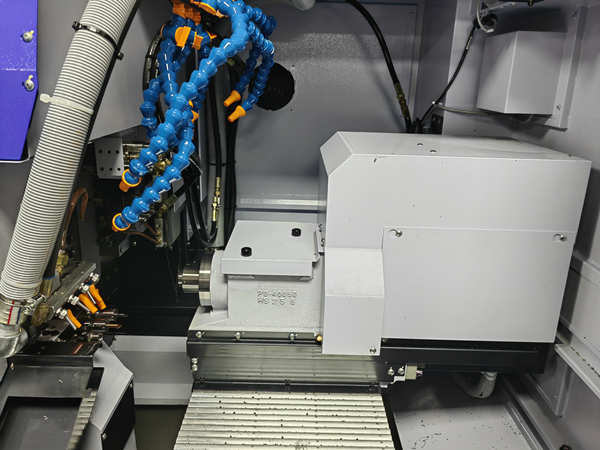Search
What are you looking for?

Traditional Machining is a process of shaping materials using various cutting tools to remove excess material from the workpiece. This technique is used in a variety of industries, from aerospace to automotive precision machining, to create precision parts and components. On the other hand, Swiss machining is a specialized form of machining that is used to create small, complex parts with high precision and accuracy. In this article, we will explore the differences between traditional machining and Swiss machining.
Traditional machining involves the use of cutting tools to remove material from a workpiece. The cutting tool moves across the surface of the workpiece, creating chips that are then removed. This process is used to create a variety of parts, from simple to complex. Traditional machining techniques include milling, drilling, turning, and grinding.
Swiss precision machining, also known as Swiss-style turning, is a specialized form of machining that is used to create small, complex parts with high precision and accuracy. This technique is particularly useful for creating parts with intricate geometries, such as those found in CNC machining medical devices, aerospace components, and consumer electronics. Swiss machining uses a sliding headstock lathe that holds the workpiece in place while a rotating cutting tool removes material from the workpiece. The cutting tool is guided by a guide bushing that ensures precise alignment of the tool and workpiece.

The main difference between traditional machining and Swiss machining is the level of precision and accuracy that can be achieved. Swiss machining allows for very tight tolerances, which is important in industries that require high levels of precision, such as aerospace and medical device manufacturing. Swiss machining can also produce complex geometries that are difficult to achieve using traditional machining techniques.
Another key difference between traditional machining and Swiss machining is the size of the parts that can be produced. Swiss machining is particularly useful for creating small parts diameter, whereas traditional machining is better suited for larger parts.
In summary, traditional machining and Swiss machining are two different techniques used to shape materials into precision parts and components. While traditional machining is a versatile technique used to create a wide range of parts, Swiss machining is a specialized technique that is particularly useful for creating small, complex parts with high precision and accuracy. Understanding the differences between these two techniques is important when choosing the right method for your manufacturing needs.
Falcon Swiss Machine Shop has over 20 years of experience in Swiss machining. At Falcon, we have exceptionally skilled machinists and advanced CNC equipment and are able to proceed with high-volume precision parts manufacturing in a quick turn. Our swiss machining service includes CNC swiss machining and swiss turn machining.